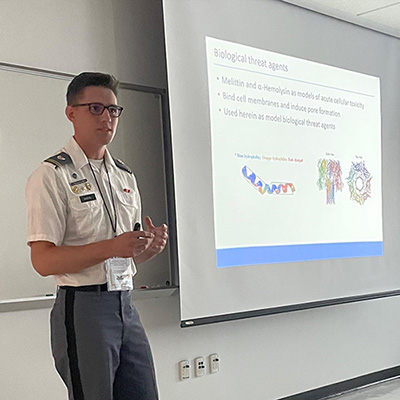First-author CDT Justus Gabriel ’24, the other nine cadet researchers from the Limbocker Group, and their collaborators from the University of Cambridge and University of Florence were recently published in Chemico-Biological Interactions. Their article was entitled “EGCG inactivates a pore-forming toxin by promoting its oligomerization and decreasing its solvent-exposed hydrophobicity.” This research highlights their work in studying the interactions between toxic proteins and small molecules to neutralize biological threat agents. Specifically, they studied melittin, a toxin found in bee venom that forms pores in cell membranes leading to cell death. They found that rationally changing the physical-chemical properties of melittin with natural products could regulate the toxicity of melittin, therein representing a possible approach to neutralize a type of biological toxin.

CDT Justus Gabriel ’24 and his Research Team’s work Published in ‘Chemico-Biological Interactions’
Category: Cadet News
Class Years: 2024



